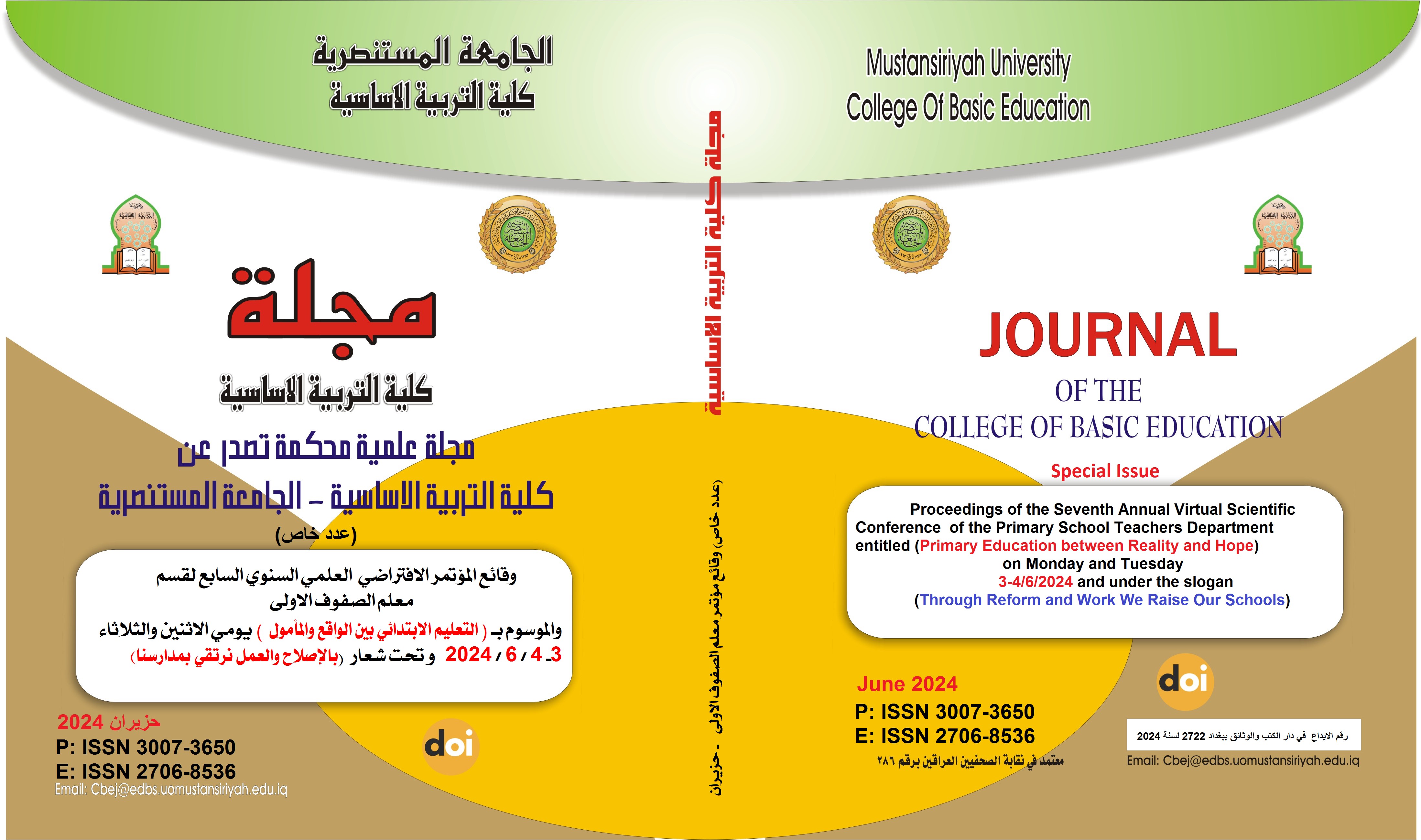Deductive intelligence among students of the Faculty of basic education
Main Article Content
Abstract
The subject of intelligence is one of the vital topics that scientists have been interested in due to its connection with various fields of academic, professional, technical, social and other fields of life, as the human brain, which is the main part of the central nervous system, is very complex in terms of structure, and works very accurately and efficiently, and what progress humanity has achieved throughout history thanks to the high mental ability of the brain, and the important aspect of the functions of that ability is intelligence. The study aims to know the level.Deductive intelligence I have.Students of the Faculty of basic education of the Departments of mathematics and psychological and educational counseling, and the researchers built a deductive intelligence test, which in its final form consists of (44) paragraphs and four alternatives, after the veracity and distinction of the paragraphs were extracted, and the veracity and consistency of the test was extracted using appropriate statistical means and with the help of the statistical program spss, and the test was applied.The test was applied to the statistical analysis sample of (400) male and female students.On the sample application. The final adult (200) students.The results were: the deductive intelligence test has good standard characteristics , the presence of a high degree of deductive intelligence in the total research sample, the presence of statistically significant differences between the male sample and the female sample in deductive intelligence and in favor of the male sample , and the presence of statistically significant differences between the sample of scientific and humanitarian specialties and in favor of the sample of scientific specialization, the study recommended the possibility of using the test by the heads of departments in diagnosing students who have high deductive intelligence, and the study came out with a number of.Conclusions and proposals.
Article Details

This work is licensed under a Creative Commons Attribution-ShareAlike 4.0 International License.
